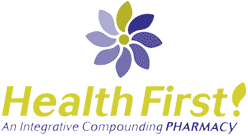Page 1 of 2
Pharmaceutical Compounding – A History Where it has been. How it has evolved. What it is. What it is not.
Prior to World War I, almost all medication was custom made on the order of a physician by a pharmacist to the exact needs of each patient. Pharmaceutical companies (then referred to as “drug companies”) provided the chemicals, additives, flavoring and excipients. Pharmacists were trained to mix these in the right order, the proper proportions, place them in the proper container and determine the expiration date of each “compound”. And they took great pride in making the final product “pharmaceutically elegant”. In fact, you could say that they set the standard for what the drug manufacturers eventually produced: pre-fabricated dosage forms (pills, tablets, capsules, suppositories, creams, ointments, salves, lozenges, etc.) that we are all accustomed to using these last 100 years. Pharmacists continued to compound but to a much lesser degree than before.
There were a few strings attached to this development: When pharmaceutical companies (now referred to as “big pharma”) took over the task of “fabricating” dosage forms they only chose to make drugs on which they could own patents. When they did produce a drug, they only made a few different dosages (big, small and pediatric). They had to add preservatives for extended shelf lives, they added color to make their product distinct, and when a product no longer had the “market” that they felt they needed, they would simply announce that they would no longer produce that drug leaving the physicians & patients to search for an alternative. Sometimes they simply took an ingredient out of a multi-drug dosage form and altered the efficacy of the product all together. Today, big pharma makes OTC products that no longer contain the original medication under which it was branded and they still call the drug by its original name! Along the same time-line two major economic forces were about to change pharmacy compounding.
The first force at work was the chain drug store circa 1972 (Thrifty, Pay Less, Sav-On, etc.). When chain drug stores came on to the scene, they were able to centralize a lot of the administrative overhead that any pharmacy dealt with, they lowered their prices, sold garden hoses, liquor, cigarettes, bulk candy, you-name-it and the pharmacy department became a “loss leader” (they sold the drugs at a deep, deep discount, sometimes at a loss, to get customers to come in so they could sell them a garden hose at a much better margin). Independent pharmacies who weren’t in the garden hose business could not compete and, one by one, sold there prescriptions to the chains before they closed their doors. The chain pharmacies did not want their pharmacists wasting time by “compounding” prescriptions.
